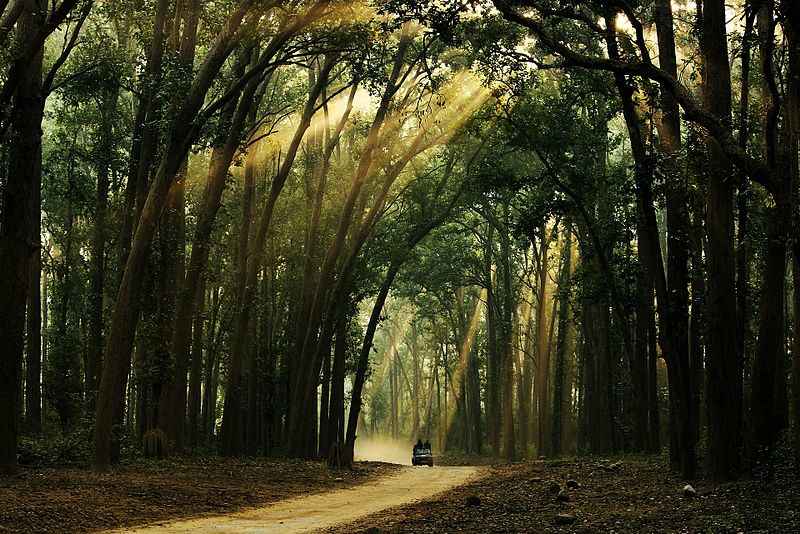
Jim Corbett National Park, nestled in the Nainital district of Uttarakhand, India, is a haven for wildlife enthusiasts and nature lovers. The park, named after the legendary hunter-turned-conservationist Jim Corbett, spans over 1,300 square kilometers and is divided into several zones for better management and visitor experience. These zones are categorized into six reserved zones and three buffer zones, each offering a unique glimpse into the rich biodiversity of the park. Here’s an in-depth look at the various zones in Jim Corbett National Park and what visitors can expect from each.
The Jhirna Zone is one of the few zones that remain open throughout the year, weather permitting. Located on the southern edge of the park, Jhirna is known for its diverse flora and fauna. Visitors can expect to see a variety of wildlife, including sloth bears, wild boars, and tigers. The zone is accessible for jeep safaris, which accommodate up to six guests along with a driver and a guide.
Similar to Jhirna, the Dhela Zone is also open year-round. It is relatively new, having been established in 2014, and offers a rich mix of biodiversity. The dense forests and open grasslands make it an ideal habitat for elephants, deer, and various bird species. Jeep safaris are available in this zone, providing an excellent opportunity to explore its natural beauty.
Dhikala is perhaps the most famous zone in Jim Corbett National Park, renowned for its picturesque landscapes and abundant wildlife. This zone opens from November 15th to June 15th each year. Unlike other zones, Dhikala offers canter safaris, which can accommodate up to 16 guests, making it a great option for larger groups. However, guests need to reach a pick-up point in Ramnagar for the safari, as resort pick-up is not available.
The Durga Devi Zone is a prime spot for birdwatchers, with a variety of avian species frequenting the area. This zone opens on November 15th and closes on June 15th. The rugged terrain, combined with the Ramganga River flowing through it, makes it a picturesque and adventurous zone. Visitors can explore this zone through jeep safaris.
Opening on October 30th and closing on June 30th, the Bijrani Zone is characterized by dense forests and vast grasslands. It is one of the best zones for spotting tigers, thanks to its favorable habitat. Jeep safaris in this zone provide a thrilling experience as visitors traverse through the varied landscapes.
Garjiya Zone, like Bijrani, opens on October 30th and closes on June 30th. It is known for its scenic beauty and rich wildlife. The zone offers jeep safaris, allowing visitors to explore its dense forests and meandering streams. The Garjiya Devi Temple, located within this zone, adds a cultural touch to the safari experience.
The Phato Zone is the only buffer zone that remains open throughout the year. It offers a less crowded alternative for visitors, providing ample opportunities for wildlife sightings without the hustle and bustle of the more popular zones. Jeep safaris are available in this zone, making it accessible for those who prefer a quieter safari experience.
Sitabani Zone is rich in mythology and history, and it closes during the monsoon season, reopening around October. It is not part of the core tiger reserve, which allows for walking safaris and bird watching, making it a unique zone compared to others. The Sitabani Temple within this zone adds to its allure.
Similar to Sitabani, Powalgarh Zone also closes during the monsoon and reopens around October. Known for its diverse flora and fauna, it offers a serene and tranquil environment for visitors. Jeep safaris are available, allowing for an immersive exploration of its natural beauty.
When planning a safari in Jim Corbett National Park, it is essential to consider the proximity of your accommodation to the respective zones. Choosing a safari that is closer to your hotel can maximize your time spent exploring the jungle rather than traveling to the gates. This strategy can significantly enhance your chances of spotting wildlife.
The park offers two safari slots – morning and afternoon. Most zones provide resort pick-up and drop-off services, except for the Dhikala Zone, where guests need to reach a designated pick-up point in Ramnagar. This arrangement is crucial to note while planning your trip, as it can affect your overall safari experience.
Jeep safaris are available in all zones except Dhikala. Each jeep can accommodate up to six guests, excluding the driver and guide. This type of safari offers a more personalized and flexible experience, allowing visitors to explore the park’s diverse landscapes at their own pace.
Canter safaris are exclusive to the Dhikala Zone. These canters can accommodate up to 16 guests and are ideal for larger groups. The canter safari charges are per person, and the larger vehicle provides a different perspective on the park’s wildlife and scenery.
Understanding the intricacies of each zone in Jim Corbett National Park can help visitors plan a more effective and enjoyable trip. Whether you’re interested in birdwatching, tiger spotting, or simply soaking in the natural beauty, each zone offers something unique. By aligning your safari choice with your hotel location and understanding the seasonal availability of each zone, you can optimize your chances of experiencing the park’s rich biodiversity to the fullest.